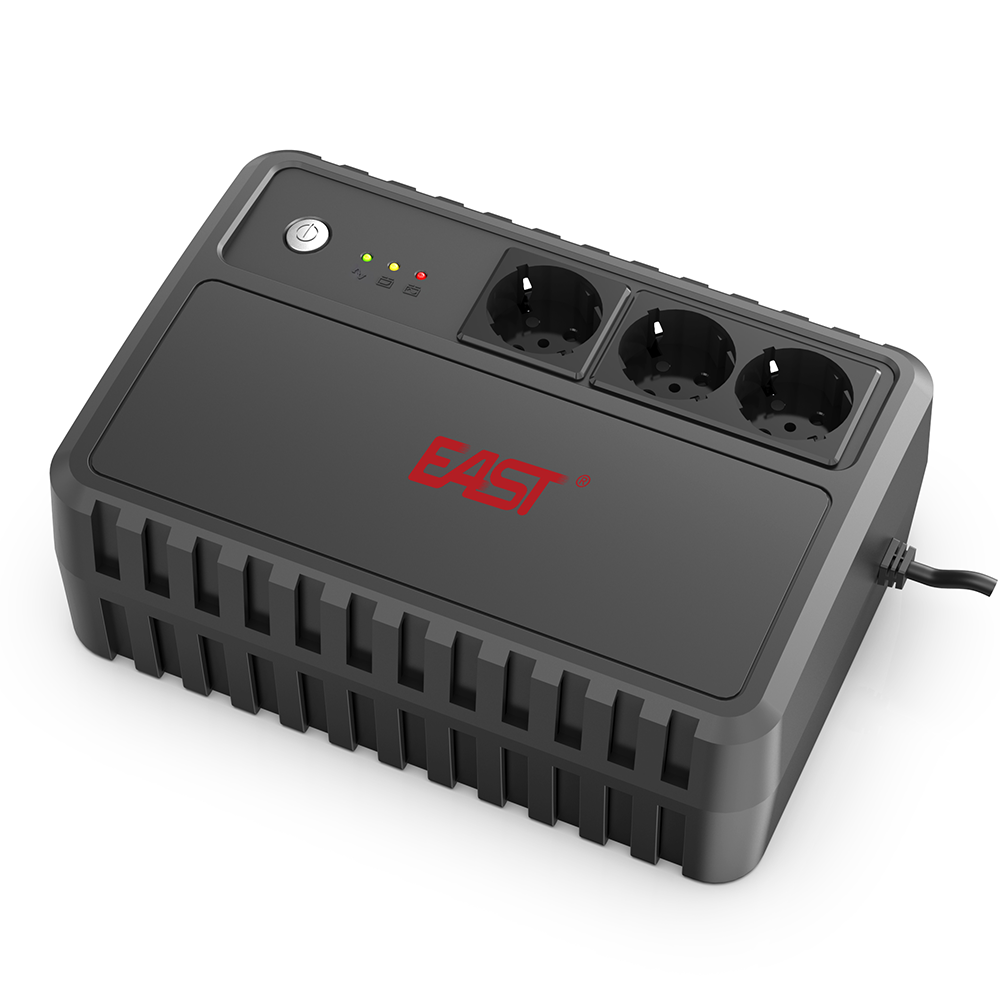Email format error
Email cannot be empty
Email already exists
6-20 characters(letters plus numbers only)
The password is inconsistent
Email format error
Email cannot be empty
Email does not exist
6-20 characters(letters plus numbers only)
The password is inconsistent


Line Interactive vs Offline UPS: Understanding the Differences for Your Power Protection Needs
In today’s world, uninterruptible power supplies (UPS) are important for keeping electronic devices and systems running when there is a power failure. Among the types of UPS systems, line interactive and offline UPS are the most common. Both types do the same job, but they work in different ways. In this guide, we will explain the main differences between line interactive vs offline UPS to help you choose the best one for your needs.
What is a UPS System?
Before we compare the two types of UPS, let's first explain what a UPS is. A UPS is a device that provides backup power when the main power goes out. It also helps protect devices from power surges, drops, and other electrical issues. There are different types of UPS, including offline UPS, line interactive UPS, and online UPS.
Offline UPS: Overview and Features
An offline UPS, also called a standby UPS, is the simplest type of UPS. It works by supplying power directly from the main power line under normal conditions. If there is a power failure or fluctuation, it switches to battery power.
Key Features of Offline UPS:
- Power Source Switching: The offline UPS uses the utility power until a problem happens. When there is an issue, it quickly switches to battery power, which takes a few milliseconds.
- Affordable: Offline UPS systems are cheaper because they don’t have advanced features like voltage regulation.
- Best for Low-Power Devices: These systems are ideal for small electronics like computers and routers, where protection against short power outages is needed.
Line Interactive UPS: Overview and Features
A line interactive UPS offers more protection than an offline UPS. It continuously uses the utility power, but it also adjusts voltage when needed. The main difference is that a line interactive UPS has an automatic voltage regulator (AVR) to correct minor voltage issues before switching to battery power.
Key Features of Line Interactive UPS:
- Automatic Voltage Regulation (AVR): This feature adjusts minor voltage fluctuations to keep devices running smoothly.
- More Efficient: Since it corrects voltage instead of using the battery for small issues, it can help extend the battery's life.
- Better for Critical Devices: This UPS is ideal for devices that need stable power, like servers, networking equipment, and home theaters.
Line Interactive vs Offline UPS: Key Differences
Now, let’s look at the main differences between line interactive vs offline UPS. These differences will help you decide which UPS is best for you.
1. Power Regulation
One big difference between line interactive vs offline UPS is how they handle voltage changes.
- Offline UPS: It does not regulate the voltage. It just switches to battery power when there is a problem with the incoming power.
- Line Interactive UPS: It adjusts the voltage before switching to battery power, so it can handle minor power problems without draining the battery.
Impact on Performance:
- Offline UPS is fine when the power supply is stable and power issues happen rarely.
- Line Interactive UPS is better when voltage changes happen often. It helps avoid battery use and keeps equipment safe.
2. Response Time
The response time is how long it takes for the UPS to switch from the main power to battery power during an outage or power problem.
- Offline UPS: The switch happens in a few milliseconds. This is fast, but it can cause short interruptions for sensitive devices.
- Line Interactive UPS: The response time is similar, but it is more proactive. The AVR feature helps it handle power issues quickly without switching to battery power.
3. Battery Usage and Lifespan
How the UPS uses its battery affects its lifespan.
- Offline UPS: It uses the battery more often because it switches to battery power for any power problem.
- Line Interactive UPS: It uses the battery less often because the AVR corrects most minor issues without using the battery.
4. Cost
Cost is an important factor when choosing a UPS system, and line interactive vs offline UPS can differ in price.
- Offline UPS: These are cheaper, making them a good option if you have a small budget. They are best for low-power applications where you don’t need a lot of advanced features.
- Line Interactive UPS: These are more expensive, but they offer better protection and more features, making them a good choice for important devices.
5. Efficiency and Energy Consumption
UPS systems also differ in how energy-efficient they are.
- Offline UPS: These systems are energy-efficient when using utility power, but they can consume more energy when they switch to battery power.
- Line Interactive UPS: These systems are more efficient because the AVR reduces the need for battery use.
6. Applications
Different UPS systems are suited for different types of users and devices.
- Offline UPS: Best for home use or small offices with simple needs and low power requirements.
- Line Interactive UPS: Better for businesses, servers, and equipment that need a stable power supply and protection from power fluctuations.
Benefits of Line Interactive UPS Systems
A line interactive UPS offers several advantages, making it a better choice for many users who need more reliable power protection.
1. Better Voltage Stability
With the AVR feature, a line interactive UPS can keep devices running even when there are small drops or spikes in voltage. This makes it a good choice for protecting sensitive equipment.
2. Longer Battery Life
Since the line interactive UPS uses the battery less often, the battery lasts longer. This is important for businesses or users who need a UPS that will last for years.
3. Better Long-Term Value
While line interactive UPS systems cost more upfront, they can be a better investment over time. They are more energy-efficient, and the battery lasts longer, meaning fewer replacements.
4. Additional Features
Many line interactive UPS models come with extra features like surge protection, noise filtering, and displays that show power information. These extras add value to the device.
When to Choose Offline UPS?
Although line interactive UPS systems have more benefits, there are times when an offline UPS is the right choice.
1. For Home Use
If you need to protect a few personal devices like a computer, TV, or router, an offline UPS can do the job without costing much.
2. Low-Power Devices
If you only need to protect devices that don’t require continuous power supply, an offline UPS is a simple and cheap solution.
3. Tight Budget
If you need a basic UPS on a budget, an offline UPS is the most affordable choice.

Conclusion
Both line interactive vs offline UPS systems provide useful protection for power problems. The offline UPS is simpler and cheaper, making it good for home use or small devices. The line interactive UPS offers better protection, especially for sensitive or critical equipment, and is a better choice when power fluctuations happen more often.
When choosing between the two, think about the devices you need to protect, your power supply, your budget, and the level of protection you need. If you want a UPS with more features and better battery life, the line interactive UPS is the better option. If your needs are basic and you’re working with a smaller budget, an offline UPS will be enough.

